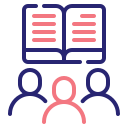
Digital Literacy Skills for Beginners: Start Confident, Stay Curious
Today’s chosen theme: Digital Literacy Skills for Beginners. Welcome to your warm, no-jargon launchpad into the digital world—where small wins add up fast. Read, try a tip, share a question, and subscribe for weekly beginner-friendly challenges.
Meeting Your Device: From Mystery to Familiar Friend
Practice naming key parts—screen, keyboard, touchpad, ports, camera, home button, and notifications. Label what each does and try one new feature daily to grow comfortable, steadily and calmly.
Navigating the Internet Safely
Open multiple tabs to compare pages, then bookmark helpful sites into folders like Learning, Banking, and Health. Clear, named bookmarks save time and reduce stress when returning later.
Navigating the Internet Safely
Use long passphrases or a password manager to generate unique credentials. Turn on two-factor authentication for important accounts to add a strong second lock against unexpected intrusions.
Navigating the Internet Safely
Pause before clicking links in emails or texts. Check the sender, hover over URLs, and distrust urgency. When unsure, contact the company using an official website or app.
Finding Truth: Search and Source Evaluation
Search Operators for Beginners
Try quotes for exact phrases, minus signs to remove results, and site: to search within a website. These simple tools narrow noise and reveal clearer, more trustworthy information faster.
Check the Author and the Date
Look for an author’s name, expertise, and recent updates. If a page lacks details or feels anonymous, keep searching and compare two more sources before accepting claims confidently.
Quick Fact-Checking Habits
Open a second source to verify numbers or names. Scan for references, official pages, or reputable outlets. When stakes are high, triple-check and save your sources for later review.

Subject Lines and Clarity
Use short, descriptive subjects like Meeting Time Update or Invoice Question. Start with the main point, then provide details. End with one clear request so replies arrive focused and helpful.

Attachments, Links, and Safety
Name files clearly, attach the correct version, and consider cloud links for large documents. Double-check recipients and avoid sending sensitive data unless absolutely necessary and properly protected.
Folders, Names, and Versions
Create simple folders like Personal, Work, and Receipts. Use clear names with dates, like 2025-03-Project-Notes. Add v1, v2, and Final only when necessary to avoid confusing duplicates.
Backups That Actually Happen
Turn on automatic cloud sync for critical folders. Keep one offline backup monthly. Test your restore process once, so you know recovery works before you truly need it unexpectedly.

Productivity Essentials: Docs, Sheets, and Presentations
Start from a template and apply built-in headings to keep formatting consistent. Use bullet lists and concise paragraphs. Your future self will thank you when scanning for key points quickly.
Troubleshooting: A Calm, Curious Mindset
When something breaks, restart the app or device, check for updates, and try again. This basic sequence fixes many issues and builds your confidence when things feel confusing or stuck.

Digital Well‑Being and Sustainable Habits
Use the 20-20-20 rule: every twenty minutes, look twenty feet away for twenty seconds. Sit comfortably, adjust screen height, and stretch hands gently to reduce tension and fatigue significantly.
Digital Well‑Being and Sustainable Habits
Mute nonessential alerts and schedule focus time. Keep only important badges visible. This small shift protects attention, reduces stress, and helps beginners stay motivated through new challenges gracefully.


